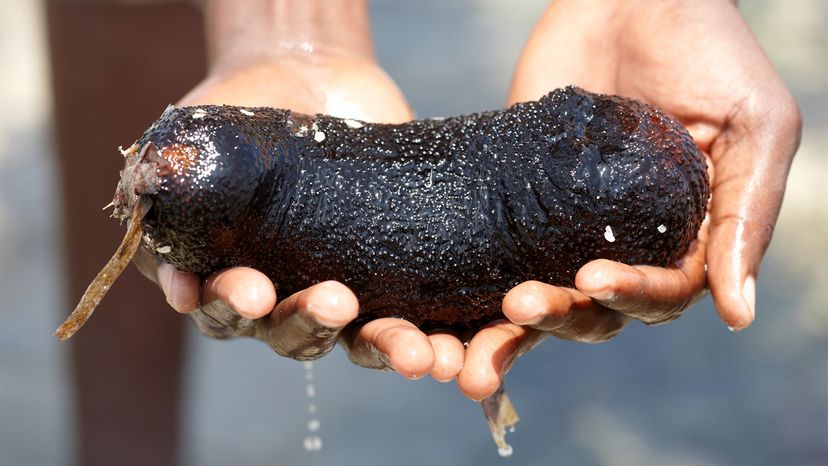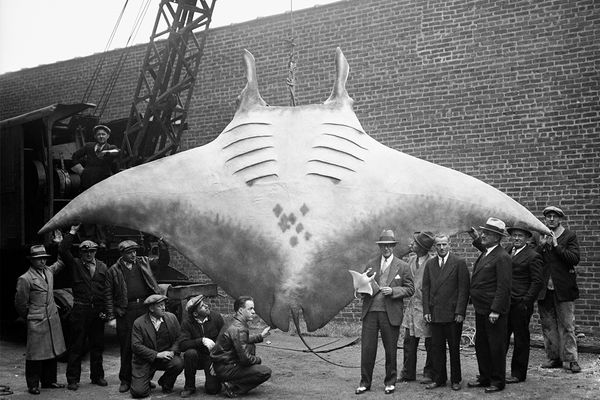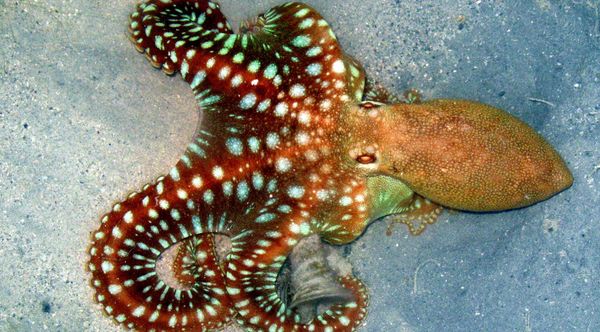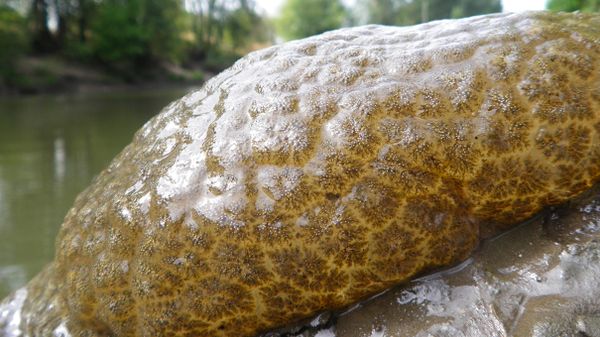
You probably have a favorite sea cucumber and don't even know it. There are over 1,200 species in the world's oceans — so many that scientists are even confused about how many there are —- so there's probably one you'd like a lot: some of them are decked out with the colors of your favorite sports team, others look like somebody crocheted an oversized zucchini out of brown acrylic yarn. Even if you weren't particularly interested in a live sea cucumber, you might want to eat a dead one, or even take it as medicine.
But if you had to guess, would you bet a sea cucumber is an animal or vegetable? Go ahead — have a real good look at the beauty in the photo again.
Advertisement
It's an animal, but it looks vegetable-ish, no? It's okay, they get that a lot — that we refer to them as "cucumbers" doesn't help. But they're echinoderms, a phylum of marine animals that also includes starfish and sea urchins. Everybody in this phylum has what's called pentameral symmetry — they have five arms arranged around a center point. Of course, the kindest thing you can say about a sea cucumber's physique is that it looks very much like a large hoagie bun you wouldn't want to eat. But though it more closely resembles a slug than a star, the five rows of tube feet that extend from its mouth to its anus give it the same basic layout as a very elongated sea urchin that fell over on its side.
Holothurians (that's the biological name for sea cucumbers) have a different approach to reproduction than we do — they are usually born either male or female, but they can change from one to another during their lives. They communicate with each other by releasing hormones into the water, which is very similar to their style of reproduction: they expel their gametes — those are egg and sperm cells — out into the water column and just assume they'll find each other, just like they assume their friend got the hormone message they left them. Holothurians eat tiny animals, particles of algae and general sea junk out of the water using frilly tentacles they keep hidden in their mouths between meals. What they have in the way of a brain is a ring of nerve cells around their mouth that tells them when it's time to eat, burrow into the sand, walk somewhere else or attack. And even though they look like tube socks filled with modeling clay, a sea cucumber's defense mechanism is pretty terrifying.
Advertisement


